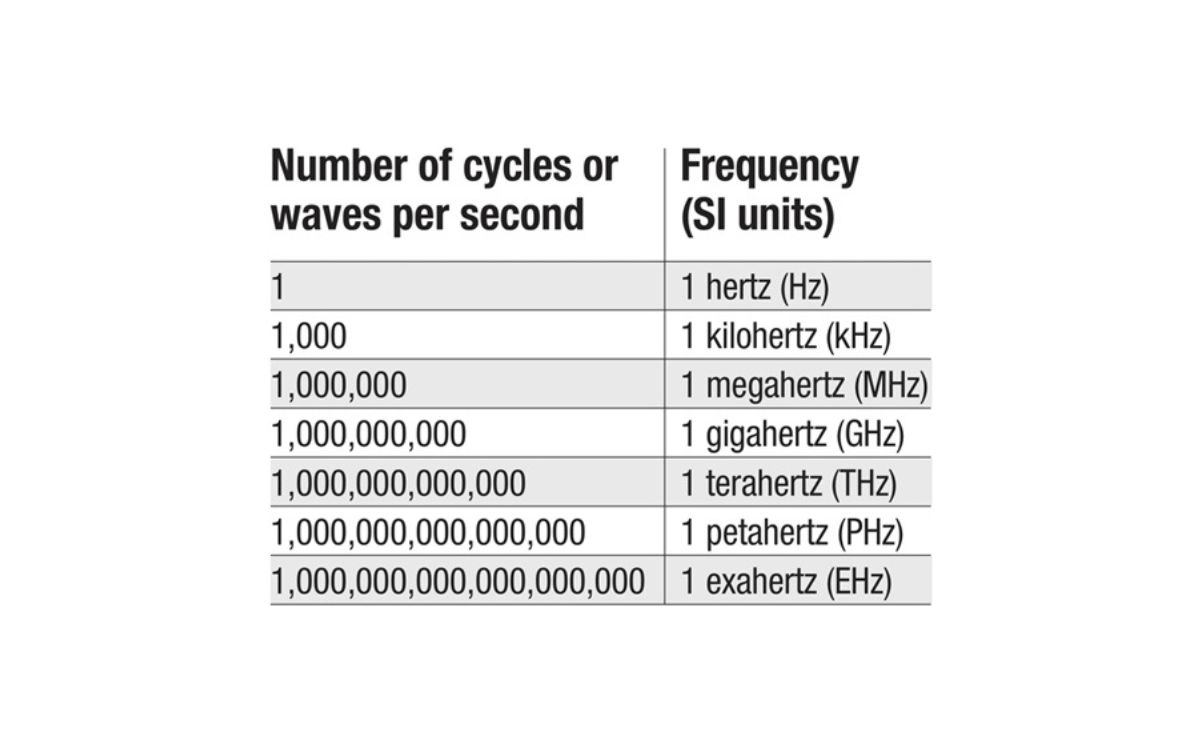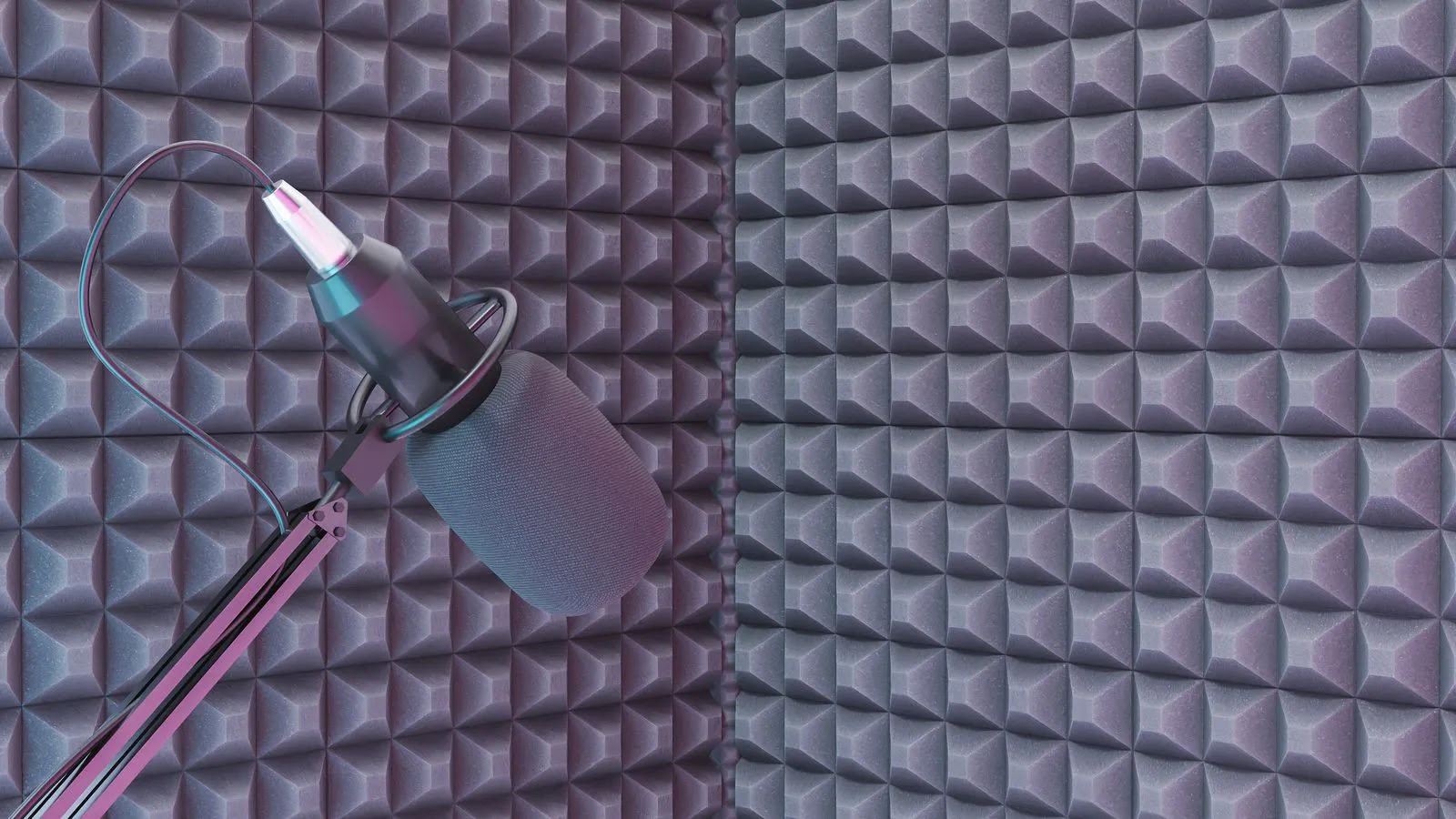Home>Instruments>Synthesizer>What Kind Of Synthesizer Is Serum


Synthesizer
What Kind Of Synthesizer Is Serum
Modified: January 22, 2024
Discover the powerful capabilities of Serum, a versatile synthesizer that allows you to create unique and captivating sounds. Elevate your music production with Serum's cutting-edge features and intuitive interface.
(Many of the links in this article redirect to a specific reviewed product. Your purchase of these products through affiliate links helps to generate commission for AudioLover.com, at no extra cost. Learn more)
Table of Contents
Introduction
Synthesizers have been an integral part of music production for decades, allowing musicians and producers to create unique and captivating sounds. With advancements in technology, virtual synthesizers have become increasingly popular, offering limitless creativity and versatility. One such virtual synthesizer that has gained significant recognition in recent years is Serum.
Serum, developed by Xfer Records, is a wavetable synthesizer plugin that has become a staple in the music production industry. Its powerful sound engine, intuitive user interface, and extensive modulation capabilities have made it a go-to choice for producers in various genres.
In this article, we will explore the features and functionalities of Serum, diving into its oscillators, filters, modulation options, effects, user interface, and its applications in sound design. By the end of this article, you will have a comprehensive understanding of what makes Serum so special and why it is a must-have tool for any music producer.
Let’s dive in and discover the world of Serum!
Overview of Serum
Serum is a powerful and versatile wavetable synthesizer plugin that offers an array of features for creating unique and dynamic sounds. It was developed by Steve Duda and released by Xfer Records in 2014. Since then, it has gained a reputation for its exceptional sound quality and flexibility.
One of the standout features of Serum is its advanced wavetable synthesis engine. Wavetable synthesis involves the manipulation of pre-recorded waveforms, known as wavetables, to generate a wide range of sounds. Serum comes with a vast collection of wavetables, ranging from traditional analog waveforms to complex digital spectra. Additionally, users have the ability to import their own custom wavetables, allowing for endless sonic possibilities.
Another noteworthy aspect of Serum is its intuitive user interface. The interface is designed with a clean and modern aesthetic, making it easy to navigate and understand. Key parameters and controls are conveniently placed, ensuring that users can quickly shape and tweak their sounds. Serum’s visual feedback system, including waveform displays and real-time visualizations, enhances the user experience and facilitates sound design.
Furthermore, Serum offers a comprehensive set of modulation options. Users can modulate various parameters within Serum using envelopes, LFOs (low-frequency oscillators), and other modulators. This enables the creation of dynamic and evolving sounds by modulating parameters such as filter cutoff, oscillator pitch, and effects parameters. Serum also supports advanced modulation techniques, such as FM (frequency modulation) and RM (ring modulation), allowing for even more intricate sound design possibilities.
In terms of compatibility, Serum is available for both Windows and macOS platforms and is compatible with most popular DAWs (Digital Audio Workstations). It can be used as a standalone plugin or as part of a larger music production setup.
Overall, Serum is a powerful and versatile synthesizer that offers a myriad of features and capabilities for music production. Its advanced wavetable synthesis engine, intuitive user interface, and extensive modulation options make it an invaluable tool for both beginner and professional producers alike.
Oscillators in Serum
When it comes to creating unique and innovative sounds, the oscillators in Serum are at the heart of the process. Serum provides users with a variety of powerful oscillators that offer unparalleled sonic capabilities.
One of the standout features of the oscillator section in Serum is its wavetable synthesis engine. It allows users to import and manipulate wavetables to generate an extensive range of sounds. Users can choose from a wide selection of wavetables included with Serum or create and import their own. This flexibility opens up a world of possibilities for creating everything from classic analog-style waveforms to complex digital textures.
In addition to wavetable synthesis, Serum also offers traditional oscillators such as sine, triangle, sawtooth, and square waves. These waveforms provide a solid foundation for creating classic synth sounds, and can be combined with the wavetable oscillators to add depth and complexity to the sound.
An essential feature of Serum’s oscillators is its manipulation capabilities. Users can adjust various parameters, such as wavetable position, pitch, and phase, to shape the sound to their liking. The built-in unison mode allows for the creation of thick and lush sounds by detuning multiple voices, adding a rich and wide stereo dimension to the sound.
Furthermore, Serum’s oscillators offer advanced synthesis techniques such as FM (frequency modulation) and AM (amplitude modulation). These techniques enable users to modulate the frequency or amplitude of one oscillator with another, resulting in complex and evolving timbres.
In terms of modulation options, the oscillators in Serum are highly versatile. Each oscillator can be modulated individually using envelopes, LFOs, and other modulators. This allows for intricate and dynamic sound variations over time.
Overall, the oscillators in Serum provide users with a wealth of options for creating unique and powerful sounds. Whether you prefer the traditional waveforms or the expansive world of wavetable synthesis, Serum’s oscillators offer endless possibilities for sound design and experimentation.
Filters in Serum
Filters play a crucial role in shaping the character and tone of a sound, and Serum offers a wide range of filters to add depth and complexity to your creations. Whether you’re looking for subtle tonal changes or dramatic filtering effects, Serum’s filter section has you covered.
Serum includes an impressive array of filter types, including low-pass, high-pass, band-pass, and notch filters, which allow you to sculpt the frequency spectrum to your liking. Each filter type has its own unique characteristics and can be customized further with adjustable parameters like cutoff frequency, resonance, and filter slope.
One of the standout features in Serum is its ability to add distortion and drive to the filters. This allows for the creation of edgier and more aggressive sounds by adding harmonics and saturation to the filtered signal. The built-in filter drive controls and distortion options empower users to push their sounds to the limit, adding a gritty and distinctive edge to the sound.
Another noteworthy aspect of Serum’s filter section is its modulation capabilities. Users have the option to modulate various filter parameters using envelopes, LFOs, and other modulation sources. This modulation flexibility allows for dynamic and evolving filter effects, opening up possibilities for creating expressive and animated sounds.
Additionally, Serum’s filter section offers advanced features like filter routing and parallel processing. Users can route multiple oscillators or noise sources into separate filter chains, allowing for complex and layered sound design. The parallel filter processing feature enables users to blend multiple filter types and adjust their individual mix levels, resulting in interesting and unique sonic textures.
Moreover, Serum includes a variety of filter modes, including standard, dual, and serial modes. These modes provide different options for combining and processing filter stages, giving users even more creative control over their sound design.
Overall, the filter section in Serum is a powerful and versatile tool for sculpting and manipulating the sonic characteristics of your sounds. With its wide selection of filter types, modulation options, distortion capabilities, and advanced routing features, Serum empowers you to create complex and expressive textures that truly stand out.
Modulation in Serum
Modulation is an essential aspect of sound design, adding movement, dynamics, and expressiveness to your sounds. In Serum, the modulation capabilities are robust, allowing you to create intricate and evolving timbres.
One of the key components of modulation in Serum is the extensive modulation matrix. This matrix offers a comprehensive list of modulation sources and destinations, allowing you to easily assign and control various parameters within the synthesizer. You can modulate almost any parameter in Serum, including oscillator pitch, filter cutoff, LFO rate, envelope attack, and much more. This gives you the power to shape and transform your sounds in countless ways.
Serum provides a range of modulation sources, including envelopes, LFOs (low-frequency oscillators), and custom drawable LFO shapes. Envelopes can be used to shape the amplitude and other parameters over time, while LFOs provide cyclic modulation for creating rhythmic and pulsating effects.
One of the unique features in Serum is its custom drawable LFO shapes. This allows you to create your own custom waveform shapes by simply drawing them on the screen. This gives you unparalleled control over the modulation, enabling you to craft complex and intricate modulation patterns that are unique to your sound.
In addition to the modulation matrix, Serum offers advanced modulation techniques such as frequency modulation (FM) and ring modulation (RM). FM allows you to modulate the frequency of one oscillator with another, resulting in harmonic and inharmonic tones. RM, on the other hand, multiplies two waveforms together, creating rich and complex timbres.
Furthermore, Serum features advanced modulation tools like the powerful drag and drop feature. This allows you to easily assign modulation sources to destinations by simply dragging and dropping them onto the targeted parameter. This intuitive workflow streamlines the modulation process, making it quick and efficient.
Overall, the modulation capabilities in Serum provide you with the tools to add movement, expression, and complexity to your sounds. Whether it’s through the modulation matrix, custom drawable LFO shapes, or advanced modulation techniques like FM and RM, Serum empowers you to sculpt your sounds with precision and creativity.
Effects in Serum
Aside from its powerful oscillators and modulation options, Serum also offers a wide range of high-quality effects that can elevate your sounds to new heights. These effects add depth, texture, and character to your sounds, allowing you to create polished and professional productions.
One of the essential effects in Serum is the filter section which we discussed earlier. However, beyond the filters, there are additional effects that can be applied to further shape and enhance your sound. These effects include distortion, chorus, phaser, flanger, delay, reverb, and more.
The distortion effect in Serum is particularly noteworthy. It allows you to add grit, warmth, and character to your sounds by introducing harmonics and saturation. With various distortion types and parameters to tweak, you can achieve anything from subtle tube-like warmth to aggressive overdrive.
The modulated effects in Serum, such as chorus, phaser, and flanger, bring movement and width to your sounds. They create stereo imaging and spatial effects, adding depth and dimension to the sound stage. By adjusting the modulation rate, depth, feedback, and other parameters, you can create everything from subtle and shimmering textures to swirling and psychedelic sonic landscapes.
Furthermore, Serum offers versatile delay and reverb effects. The delay effect helps to create echoes and rhythmic patterns, adding space and depth to your sounds. You can adjust parameters such as time, feedback, and stereo width to tailor the delay effect to your liking. The reverb effect is perfect for placing your sounds in realistic or otherworldly spaces. With controls for size, decay, and predelay, you can create anything from small rooms to enormous cathedrals or surreal ambient environments.
Another noteworthy feature of the effects in Serum is their modulation capabilities. Just like the oscillators and filters, the effects can be modulated using the modulation matrix. This allows you to create dynamic and evolving effects, adding movement and life to your sounds.
The effects in Serum are not only of high quality, but they are also highly customizable. Each effect has its own set of parameters that can be adjusted and automated to suit your needs. The user-friendly interface makes it easy to navigate and tweak the settings, allowing for quick and intuitive sound design.
In summary, the effects in Serum are powerful tools that can enhance and transform your sounds. From distortion and modulation effects to delay and reverb, Serum provides a diverse range of effects that can add depth, character, and movement to your productions. With their modulatability and customization options, these effects allow for endless creative possibilities.
User Interface of Serum
The user interface of Serum is designed with a focus on simplicity, functionality, and visual feedback. It strikes a perfect balance between a clean and modern aesthetic, while providing easy access to all the necessary parameters and controls for sound design.
The interface of Serum features a main window that displays the oscillators, filters, modulation matrix, and effects sections. The layout is intuitive, with each section clearly labeled and easily accessible. The visual representation of the oscillators’ waveforms, filters’ frequency response, and modulation sources’ shapes provides valuable visual feedback, aiding in sound design and understanding the changes being made.
The central navigation bar of Serum’s interface allows users to switch between the main sections, including oscillators, filters, effects, and modulation. This makes it easy to navigate through the different features and functions of the plugin, providing a seamless workflow.
The user interface also includes draggable waveform displays, envelopes, and LFOs. These can be easily adjusted and customized, allowing users to visually shape and fine-tune their sounds. The ability to zoom in and out on the waveform displays provides precise control over the sound’s timbre and modulation.
Additionally, Serum offers a range of adjustable parameters and knobs that can be easily manipulated. These parameters include oscillator detune, filter cutoff, resonance, envelope attack and release times, and various effect settings. The interface provides clear and responsive control, allowing for precise adjustments and experimentation.
The layout of the user interface in Serum is scalable and flexible, making it suitable for different screen sizes and resolutions. This ensures that users can work comfortably and efficiently, regardless of their display setup.
Overall, the user interface of Serum is designed to facilitate creativity and productivity. It offers a visually appealing and user-friendly environment that empowers users to navigate seamlessly and experiment with sound design. The intuitive layout, visual feedback, and easy access to parameters make the user interface of Serum a standout feature, enhancing the overall user experience for music producers.
Sound Design with Serum
Serum is renowned for its versatility and powerful sound design capabilities. Whether you’re aiming to create lush pads, gritty basslines, or intricate leads, Serum provides a wide range of features and tools to help you achieve your desired sounds.
One of the key aspects of sound design in Serum is the extensive wavetable synthesis engine. With a vast library of wavetables to choose from, including traditional analog waveforms, complex digital textures, and even the option to import your own custom wavetables, Serum enables you to create unique and evolving sounds. The ability to manipulate and blend multiple wavetables allows for a limitless variety of sonic possibilities.
In addition to the wavetable engine, Serum offers various modulation options to add movement and expression to your sounds. The modulation matrix allows you to assign modulators, such as envelopes and LFOs, to control parameters like filter cutoff, oscillator pitch, and effects settings. This modulation flexibility opens up a world of dynamic and evolving sound design possibilities.
Serum’s filters play a crucial role in shaping the character of your sounds. With a selection of filter types, including low-pass, high-pass, band-pass, and notch filters, you can sculpt the frequency spectrum to enhance specific sonic qualities. By combining different filters and applying modulation, you can create intricate and evolving textures.
The effects in Serum further contribute to the sound design process. With distortion, chorus, phaser, delay, reverb, and more, you can add depth, color, and movement to your sounds. The ability to modulate and automate the effects parameters allows for even more creative possibilities.
Furthermore, Serum’s user-friendly interface and intuitive workflow make sound design a seamless and enjoyable process. The visual feedback provided by the waveform displays, envelope and LFO shapes, and modulation matrix allows for precise control and understanding of the changes being made to your sounds.
With its comprehensive set of features and tools, Serum enables you to explore and push the boundaries of sound design. The combination of wavetable synthesis, modulation options, filters, effects, and a user-friendly interface gives you the freedom to create unique and captivating sounds that stand out in your music productions.
Pros and Cons of Serum
Pros:
- Powerful wavetable synthesis engine: The extensive wavetable synthesis capabilities of Serum allow for a wide range of unique and evolving sounds. The ability to import custom wavetables further expands the sonic possibilities.
- Intuitive user interface: Serum’s user-friendly interface makes it easy to navigate and understand. The visual feedback provided by waveform displays, modulation shapes, and the overall layout contributes to a seamless and efficient workflow.
- Extensive modulation options: Serum offers a robust modulation matrix with a variety of sources to modulate parameters. This allows for dynamic and expressive sound design, adding movement and variation to your sounds.
- High-quality filters and effects: Serum provides a wide range of filter types and high-quality effects, enhancing your sounds with depth, character, and texture. The ability to modulate and customize these effects adds further creativity to the sound design process.
- Versatile sound design capabilities: With its comprehensive set of features and tools, Serum enables you to create a wide range of sounds, from lush pads to gritty basslines and intricate leads. The combination of wavetable synthesis, modulation, and effects offers endless sonic possibilities.
- Wide compatibility: Serum is compatible with most popular DAWs and is available for both Windows and macOS platforms, making it accessible to a wide range of music producers.
Cons:
- High CPU usage: Due to the complexity and advanced features of Serum, it can be CPU-intensive, especially when working with multiple instances or complex patches. This may require users to optimize their systems or use it selectively in resource-heavy projects.
- Steep learning curve: While Serum’s interface is user-friendly, mastering all its features and understanding the intricacies of wavetable synthesis and modulation can take time and practice. However, the wealth of tutorials and resources available can assist in overcoming these challenges.
Despite a few potential drawbacks, the numerous pros of Serum outweigh the cons. Its powerful sound engine, intuitive interface, extensive modulation options, high-quality filters and effects, and versatile sound design capabilities make it a top choice for music producers in various genres.
Conclusion
Serum is a powerhouse wavetable synthesizer that has firmly established itself as a go-to tool for music producers. Its extensive sound design capabilities, intuitive user interface, and high-quality output make it an essential asset in any production toolkit.
With its advanced wavetable synthesis engine, Serum allows users to create unique and dynamic sounds. The ability to import custom wavetables and the wide range of modulation options add to its versatility, empowering users to explore new sonic territories.
The user interface of Serum is designed with simplicity and functionality in mind. The visually appealing layout, intuitive navigation, and real-time feedback make it easy for both beginner and experienced producers to dive into sound design with ease.
The filters and effects in Serum further enhance sound manipulation, providing depth, color, and movement to your sounds. From subtle tonal shaping to intricate modulation effects, Serum offers a comprehensive range of options to elevate your productions.
While Serum has a few potential drawbacks, such as high CPU usage and a learning curve, the benefits it brings to the table far outweigh these limitations. The immense creative potential and professional-grade output justify Serum’s popularity among music producers around the world.
In conclusion, Serum is a powerful and versatile synthesizer that excels in sound design. With its wavetable synthesis engine, modulation options, filters, effects, and user-friendly interface, Serum empowers music producers to unleash their creativity and craft truly unique sounds. Whether you’re a beginner experimenting with sound design or a seasoned professional looking for a powerful tool to take your productions to the next level, Serum is undoubtedly a must-have in your arsenal.











